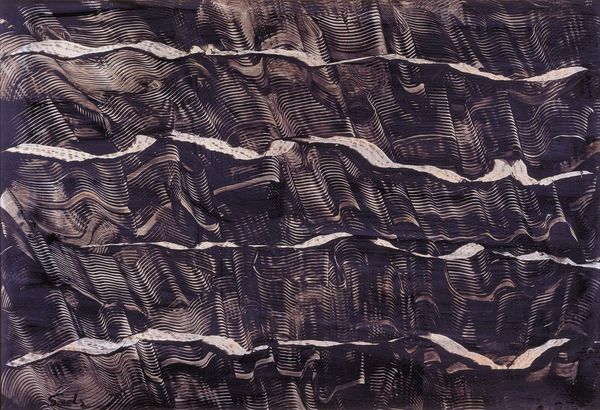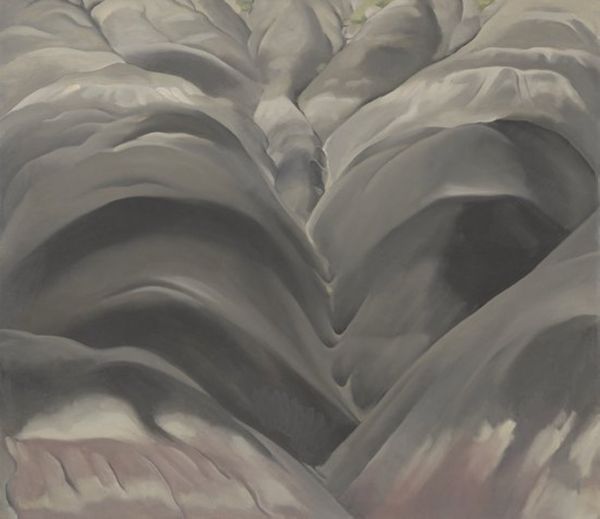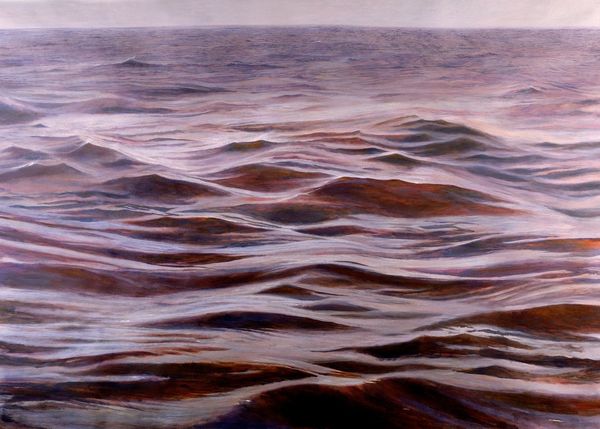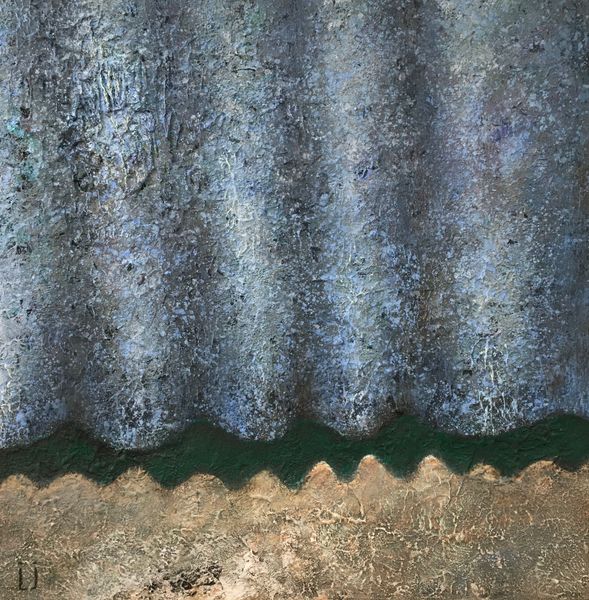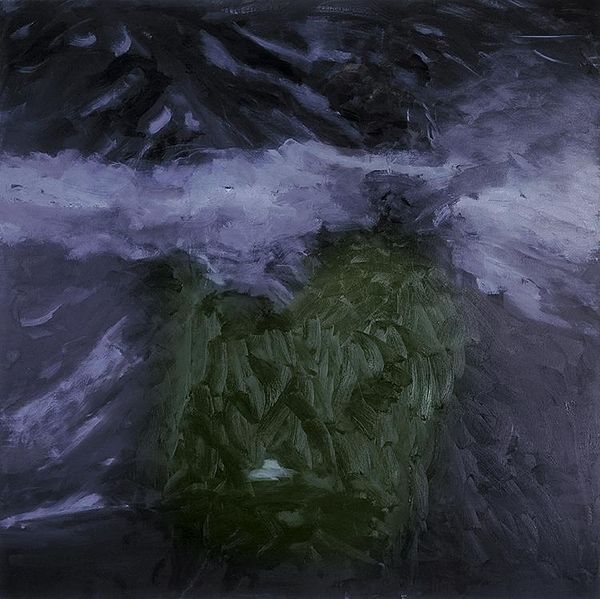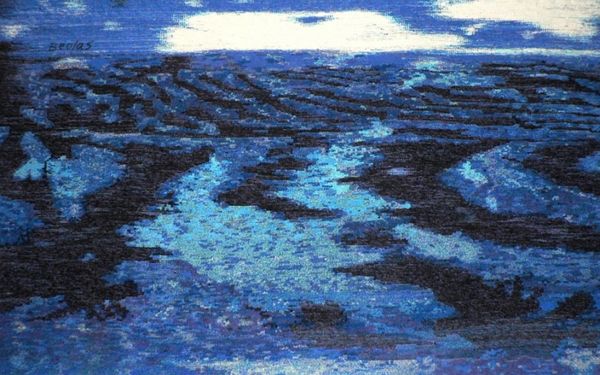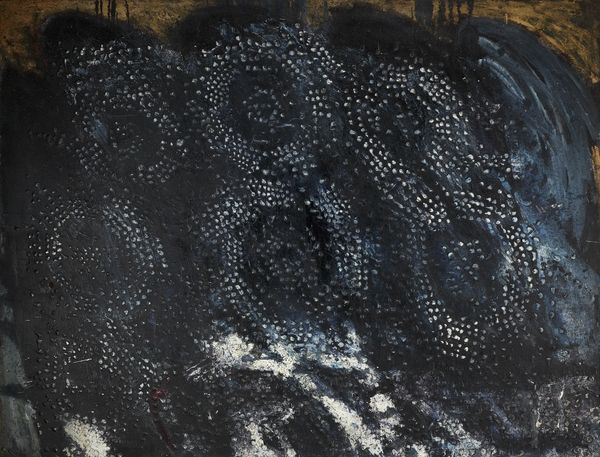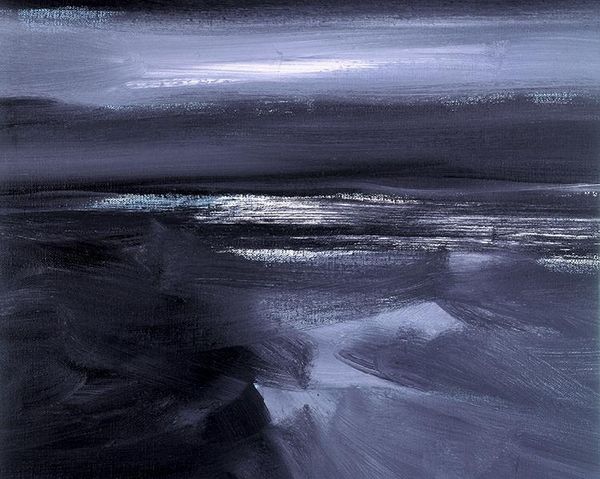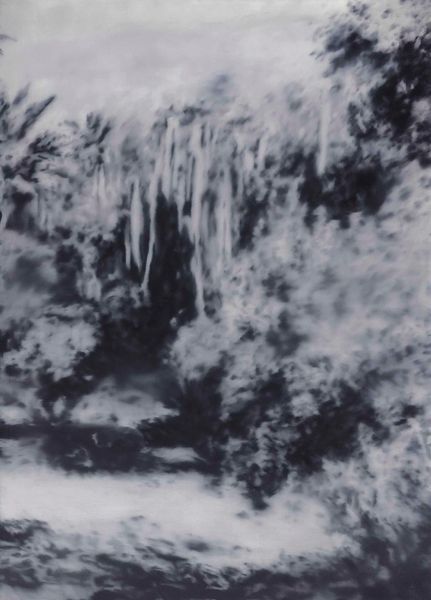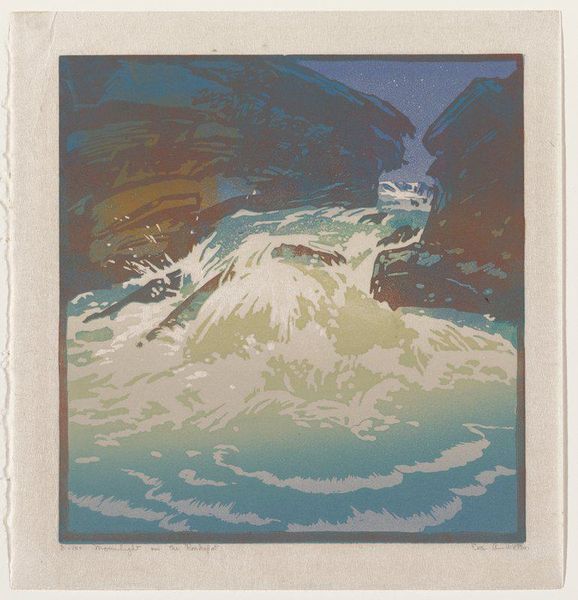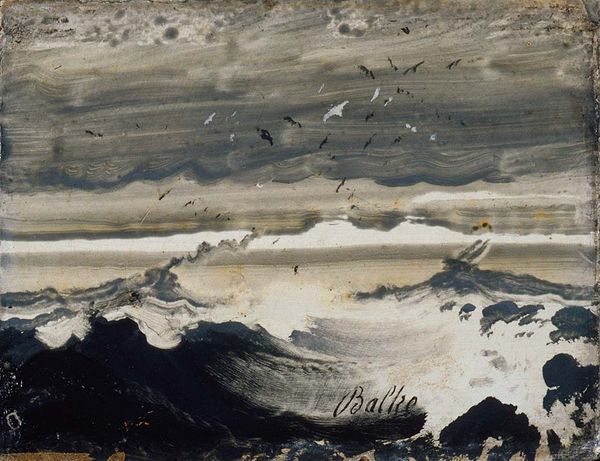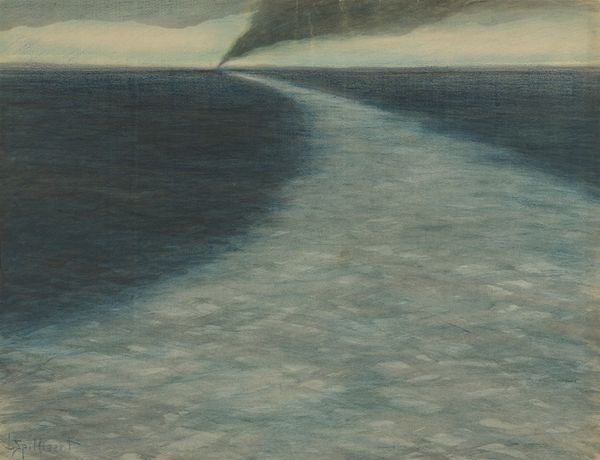
Dimensions: support: 914 x 1505 mm
Copyright: © The estate of Edward Middleditch | CC-BY-NC-ND 4.0 DEED, Photo: Tate
Editor: Edward Middleditch's "Sheffield Weir II" presents us with rushing water in dark blues and whites. It feels almost turbulent. What symbolic weight might this scene carry? Curator: Water, throughout art history, is a complex symbol, isn't it? Think of its dual nature – life-giving, yet destructive. Does this turbulent depiction evoke feelings of cleansing or perhaps chaos? Editor: Chaos, definitely, given the lack of horizon line and the swirling brushstrokes. Curator: Exactly! And the weir itself, as a man-made structure imposed on nature, what stories does that visual juxtaposition tell about our relationship with the environment and its raw power? Editor: I hadn't considered the tension between the natural and constructed elements before. Thanks for pointing that out. Curator: It's in these layers of symbolic contrast that the image truly resonates, isn't it?
Comments
tate 6 months ago
⋮
http://www.tate.org.uk/art/artworks/middleditch-sheffield-weir-ii-t01046
Join the conversation
Join millions of artists and users on Artera today and experience the ultimate creative platform.
tate 6 months ago
⋮
This is one of several paintings based on drawings Middleditch made in and around Sheffield in the summer of 1953 shortly after he left the Royal College of Art. Friends and fellow students there were Derek Greaves and Jack Smith, who had grown up together in Sheffield, and it was on Greaves' invitation that Middleditch first visited the city. The drawings he made there were an attempt to come to terms with an environment that was very different from London. It was as this time that his paintings began to reveal his interest in water, also represented in 'Dead Chicken in a Stream' T 00641. Sheffield Weir was included in his first one man exhibition at the Beaux Arts Gallery in 1954. Gallery label, August 2004
